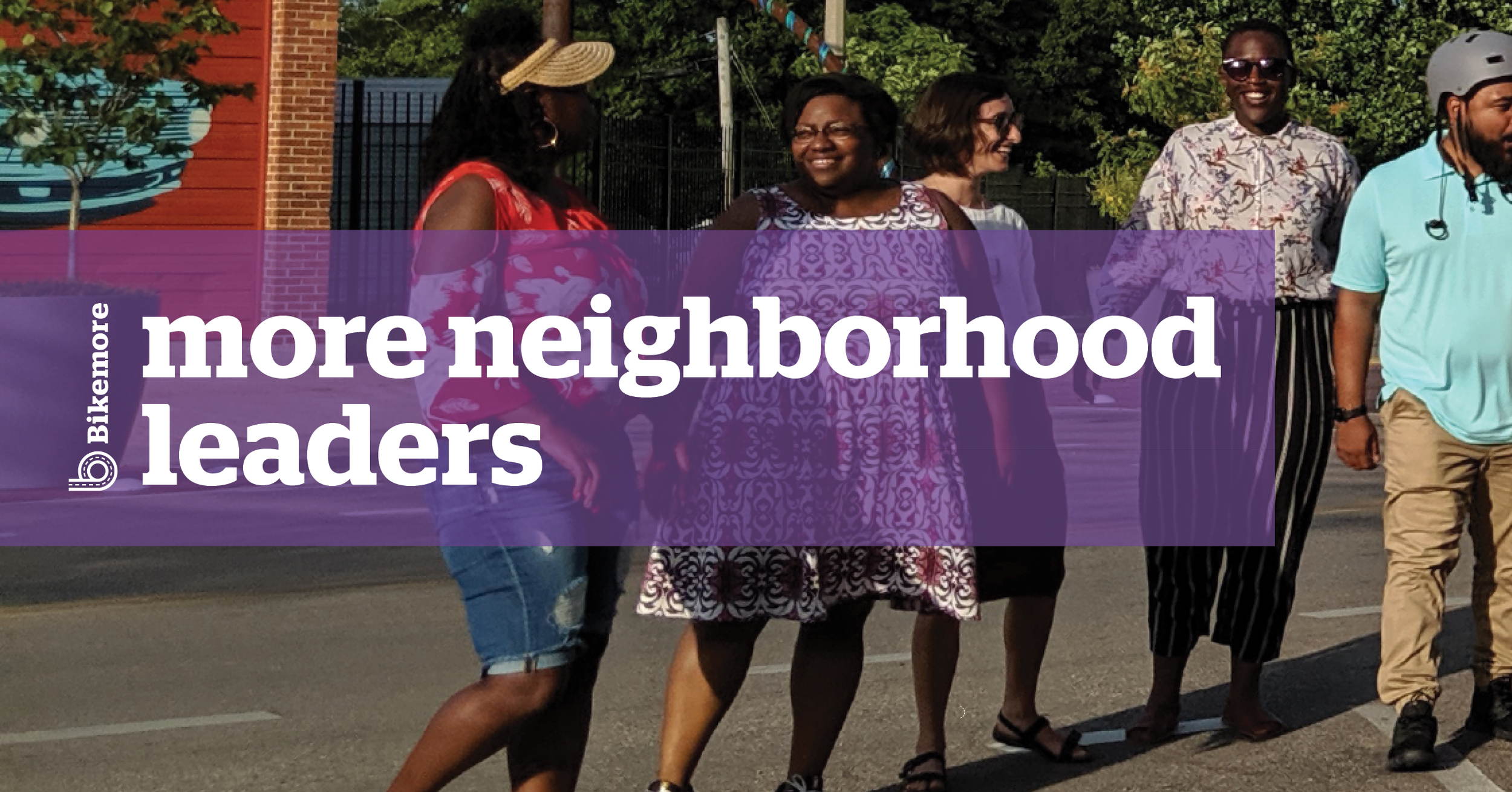We first met Keisha Allen, a neighborhood leader in South Baltimore and resident of Westport, when we were working with South Baltimore Gateway Partnership to study the viability of a pump track. In our conversations with her, it was clear that, as a long term community leader, she had powerful insight into what her neighborhood needed in terms of Complete Streets.
In July, she joined us on our Memphis Study Tour, part of the PeopleForBikes grant that we were awarded along with funding for the Big Jump. We chose Memphis because of how the city has embraced addressing needs for a better transit system, and because it carries a similar history and demographics to Baltimore. We recently caught up with her to ask about her reflections on the trip.
Why is it important to have a neighborhood that is safe for biking and walking?
People in cities are increasingly getting rid of their cars or opting out of obtaining a driver’s license to use public transportation. As this trend continues to grow, we have to invest in protected bike lanes and safer, wider sidewalks. Since cars are still necessary for many of us, we need to ensure everyone has a safe experience regardless of what method a person decides to use.
What do you see as the biggest challenge to making your neighborhood safer for biking and walking?
Convincing my neighbors that the true purpose of changing the design and layout of our roads and sidewalks is not a precursor for gentrification and/or displacement. Recent history has shown that it has been. I live in a neighborhood where transportation improvements have been promised but delayed for 20 years with all kinds of silly excuses. Now that active real estate development is happening nearby, we expect people to make bike lanes a higher priority over dozens of other requests that remain unfulfilled from multiple master plans that we believe are more important. When my neighbors and I petition to the city for improved lighting, crosswalks, sidewalks, traffic calming modifications or bus shelters, we are ignored or simply told no. The rejection of addressing these safety related improvements force us to make dangerous decisions on how to navigate around the neighborhood.
What was something you learned or experienced in Memphis that surprised you?
Despite bike lanes being a relatively new concept in Memphis, drivers were extremely courteous and patient to cyclists. For instance, I remember struggling to pedal through an intersection on Mississippi Blvd when the light turned green for the car traveling in the opposite intersection. I shouted, “I’m sorry”, and the woman shouted back, “Get it Girl! Take your time!” We cycled through dozens of intersections and not once did a driver blow their horn or swear at us.
What strategies did you learn from people in Memphis that will help you promote biking and walking in your neighborhood?
Hearing directly from residents in South Memphis on how bikes were introduced to their community as an alternative to Memphis’s long wait times for using public transportation. Listening to a particular woman’s story confirmed that if you want community buy-in, fellow community members must lead the mission, not special interest groups or lobbyists.
What part of the trip had the most value as it relates to your role as a neighborhood leader?
The most valuable part of the trip was the people who traveled with me to Memphis. There were community leaders like myself, bike activists, and elected officials sharing the same experience. We all returned home with a better understanding on how bikes and walking can add value to all of Baltimore’s 278 neighborhoods.
What are your hopes for the future of biking and walking in Baltimore?
I would love to see cyclists, pedestrians and drivers form a meaningful collaboration to promote a culture of mutual respect, patience and understanding, but most importantly, safety awareness.
Keisha emphasizes the need for people to be on the same page, coming from a belief that everyone deserves respect and safety on the street. She shares how her experiences in Memphis solidified that getting community buy-in requires leadership from the community and widespread agreement, truly seeing how people who bike, walk, take transit, and drive could respect and collaborate to create safe options for multi-modal transit. And she calls to attention the historic pattern of city government ignoring and deprioritizes neighbors’ requests for improved walking and transit access, but addressing requests when they’re aligned with development interests.
We were excited to bring Keisha on this trip to continue cultivating relationships with neighborhood leaders that have been doing the work of building streets for people much longer than we have. We know change starts at the community level, and that is why we’re investing our more of energy into leaders like Keisha in 2020.
Make a Direct Action Donation (501c4)
Direct Action donations are our greatest need. They can fund everything we do, including directly lobbying elected officials, running grassroots organizing campaigns, and advocating for or against legislation. They are not tax-deductible.
Make a Charitable Donation (501c3)
Charitable donations fund our education, organizing, and programming, and may be tax-deductible.

